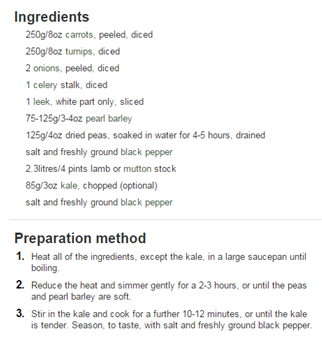Conclusion
Overall I have looked at seven quite different books however
they do have similarities when it comes to the representation and meaning of
food. The Railway Children, Charlie and the Chocolate Factory and Oliver
Twist all use food as a way to represent the struggle and poverty the
characters live in. Alice in Wonderland
and Harry Potter focus on the more
magical effects of food, foods no one has heard of before and foods that make you
grow and shrink. The representation of food in Heidi shows that just because food may appear simple it does not
mean it’s any less delicious than what others would consider treats. This then
brings me onto my next point, what foods are considered treats? Through my
research I have found that anything can be a treat it is up to the character
who defines whether or not it is a treat to them. The Lion, The Witch and the Wardrobe use food as a way to
foreshadow bad events, emphasising that food is not always as it seems. It may
be delicious and wonderful to eat what you like
but it is not always the right thing to do. Edmond gets his brother and
sister’s trapped because he’s too selfish to think about anything but Turkish
Delight. As I have looked at books over a vast period of time you would think
descriptions of food would differ over time. The only thing I really found that
differed was the purpose of food in each book and what is signified. I’m not
certain that had anything to do with the time period but rather the purpose
differed due to the different story lines and ideas in each book.
Works Cited
Lewis, C. S., and Pauline Baynes. The Lion, the Witch,
and the Wardrobe. New York: HarperCollins, 1994. Print.
Rowling, J. K., and Mary GrandPré. Harry Potter and
the Sorcerer's Stone. New York: A.A. Levine, 1998. Print.
Carroll, Lewis. Alice in Wonderland. N.p.: Wordsworth
Edns., 1993. Print.
Dahl, Roald, and Joseph Schindelman. Charlie and the
Chocolate Factory. New York: Knopf, 1964. Print.
Spyri, Johanna, and Ruth Sanderson. Heidi. New York:
Ariel /Alfred A. Knopf, 1984. Print.
Nesbit, E., and C. E. Brock. The Railway Children. New
York: Knopf, 1993. Print.
Dickens, Charles. Oliver Twist. New York: Dodd, Mead,
1941. Print.
































































.jpg)





